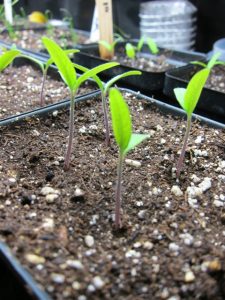 With the first days of spring coming out to play, I have already begun to map out this year’s garden plan. When deciding when to start planting, I refer to the UNH Cooperative Extension’s page to view vegetable planting dates.
With the first days of spring coming out to play, I have already begun to map out this year’s garden plan. When deciding when to start planting, I refer to the UNH Cooperative Extension’s page to view vegetable planting dates.
Hardy vegetables such as broccoli, cabbage, kohlrabi, onions, lettuce, peas, radish, spinach and turnips can be planted 2 to 4 weeks before the average last spring frost. These vegetables are able to withstand lower temperatures which allow them to be planted earlier in the spring and then later in the summer for harvest in the fall. Crops such as beets, carrots, cauliflower, parsley, parsnips, potatoes, and Swiss chard are less tolerant to frost but can be planted up to two weeks before the last frost.
More tender vegetables include beans, celery, corn, cucumbers, and summer squash require planting dates around the average last frost. Even more frost sensitive plants such as lima beans, eggplant, cantaloupe, peppers, pumpkin, winter squash, tomatoes and watermelon need to be planted two or more weeks after the last frost.
I’ve put together five tips for a successful vegetable garden, that I have learned and acquired over the years from trial and error and from fellow gardeners:
1) Choose a site that obtains full sunlight throughout the day
2) Don’t over crowd your garden. (the plants will get tangled together which will make harvesting difficult)
3) Water early in the day. (this prevents roots from rising to the top of the soil and being sunburnt during the hottest points in the day. Watering earlier also keeps you out of the hot sun!)
4) Grow only what you will eat. (this will reduce food waste and caring for the garden much easier),
5) Check on your garden daily. (keep an eye out for pest signs, disease, weeds, and ripe plants!)
I wish you all a happy growing season and encourage you to share any gardening tips you have!
For additional information on planting fruits and veggies:
http://extension.unh.edu/Fruits-and-Vegetables
